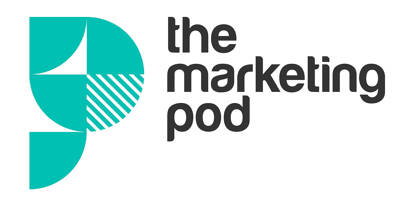Businesses of all sizes, from SMEs to corporations, are setting ambitious sustainability targets to contribute to decarbonisation, build investor and stakeholder trust, and appeal to Earth-conscious consumers.

In this context, organisations are racing to demonstrate their environmental credentials, and crafting an effective green messaging strategy is quickly becoming a B2B marketing priority.
But while it’s encouraging that so many businesses are recognizing the importance of curbing their carbon footprint, the popularity of sustainability initiatives creates a challenge for marketers. If everyone’s talking about their sustainability, how can your business stand out?
Search engine optimisation (SEO) can help us to understand what customers are looking for and to create content that responds to their search needs, but in a crowded marketplace, improving our ranking can be difficult. So, how can Earth-conscious companies create sustainability-related content that resonates with their audience and ranks well on search engines?
Understand what your audience is searching for
57% of B2B marketers state that SEO alone generates more leads than any of their other marketing initiatives. This testifies to the importance of a solid SEO strategy, but stuffing your content with popular keywords is not a good approach. To stand out, you must find a balance between what your audience is searching for, and where your expertise lies.
This is where keyword research becomes essential. When it comes to sustainability, there are so many buzzwords that it can be hard to choose which ones are relevant to your business. So, ask yourself why you want to talk about sustainability and what topics are closer to your and your audience’s interests and expertise.
Start with a brainstorming session to identify the main themes and keywords that relate to your business. Then, use tools like SemRush or Google Keyword Planner to research their search volume and how difficult they are to rank for.
Generally speaking, keywords with a high search volume and little competition tend to be the best choice, because they’ll allow you to attract the most traffic, without too much effort.
However, if you’re in a niche market or are trying to attract a very specific audience, the search volume might be irrelevant – you’d rather need to focus on using the exact phrases and keywords that your prospects are searching for.
Also, remember that SEO is not at odds with creativity. You can draft copy that is well-structured and incorporates the keywords you need, while expressing original ideas in a tone of voice that is distinctly yours.
Use sector-specific keywords
Part of finding the right keywords is being specific and avoiding generic environmental jargon.
For example, if you’re a renewable energy generator, using sector-specific keywords like “offshore wind farm”, “biofuel”, or “waste to energy” may be more relevant to your target audience than broader environmental keywords like “eco-friendly” or “sustainable”. By using specific keywords, you’ll be able to attract your ideal customers, those who are interested in exactly what you are offering.
Using long-tail keywords is also a good strategy. These are generally made of three to five words, and can help you be even more specific when targeting niche demographics. For example, instead of the short-tail keyword “sustainability”, you could try to rank for something more precise, like “sustainable construction company”. Don’t be put off by the lower search volume of long-tail keywords: when generating new traffic, quality is better than quantity.
Lastly, to get the best results, it’s important to use keywords organically in your copy, making sure that the text flows well and isn’t repetitive. Search engines are becoming increasingly good at spotting content that has been written for the sole purpose of ranking for a specific term, and can actually penalise web pages where keywords are repeated over and over again. This is because their algorithms are being trained to prioritise content that genuinely answers users’ questions.
Revise, adapt, monitor
Once you’ve identified the relevant keywords for your business, it’s important to optimise your existing content accordingly, as well as create new assets. Make sure your landing pages, blog posts and case studies focus on a specific topic and incorporate your selected keywords. You should also pay attention to the structure of your copy: include several subsections and use titles and subtitles strategically and hierarchically to add keywords where relevant.
Then, keep monitoring the keywords that are relevant to you to understand if the changes you’ve made have improved your website’s ranking. It might take time, but your hard work will pay off.
Finally, it’s important to remember that SEO is just one aspect of an effective green marketing strategy. To truly stand out in the crowded sustainability market, it’s important to have a holistic approach that includes social media, content marketing and brand positioning.
By combining SEO best practice with a genuine commitment to sustainability, you can make sure your content is found and appreciated by people who align with your values and might be interested in your products and services.
If you’re planning a sustainability-related campaign and would like the support of expert green marketing specialists, The Marketing Pod can help with all aspects of integrated marketing – from SEO and content, to design and web development. To discuss how we can help, get in touch with our team.
N.B. The information contained in this entry is provided by the above supplier, and does not necessarily reflect the views and opinions of the publisher


